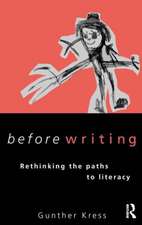Arabic Computational Morphology: Knowledge-based and Empirical Methods: Text, Speech and Language Technology, cartea 38
Editat de Abdelhadi Soudi, Antal van den Bosch, Günter Neumannen Limba Engleză Hardback – 11 sep 2007
| Toate formatele și edițiile | Preț | Express |
|---|---|---|
| Paperback (1) | 945.47 lei 6-8 săpt. | |
| SPRINGER NETHERLANDS – 18 noi 2010 | 945.47 lei 6-8 săpt. | |
| Hardback (1) | 951.47 lei 6-8 săpt. | |
| SPRINGER NETHERLANDS – 11 sep 2007 | 951.47 lei 6-8 săpt. |
Din seria Text, Speech and Language Technology
-
 Preț: 391.79 lei
Preț: 391.79 lei - 20%
 Preț: 652.54 lei
Preț: 652.54 lei - 18%
 Preț: 954.14 lei
Preț: 954.14 lei - 18%
 Preț: 952.89 lei
Preț: 952.89 lei - 18%
 Preț: 945.30 lei
Preț: 945.30 lei - 18%
 Preț: 1222.94 lei
Preț: 1222.94 lei - 18%
 Preț: 954.31 lei
Preț: 954.31 lei - 18%
 Preț: 949.73 lei
Preț: 949.73 lei - 15%
 Preț: 640.06 lei
Preț: 640.06 lei - 15%
 Preț: 646.94 lei
Preț: 646.94 lei - 18%
 Preț: 949.37 lei
Preț: 949.37 lei - 20%
 Preț: 651.89 lei
Preț: 651.89 lei - 15%
 Preț: 644.30 lei
Preț: 644.30 lei - 18%
 Preț: 961.55 lei
Preț: 961.55 lei - 20%
 Preț: 1006.12 lei
Preț: 1006.12 lei - 18%
 Preț: 955.56 lei
Preț: 955.56 lei - 20%
 Preț: 993.09 lei
Preț: 993.09 lei - 15%
 Preț: 642.51 lei
Preț: 642.51 lei -
 Preț: 389.49 lei
Preț: 389.49 lei - 20%
 Preț: 643.17 lei
Preț: 643.17 lei - 18%
 Preț: 947.50 lei
Preț: 947.50 lei - 20%
 Preț: 993.93 lei
Preț: 993.93 lei - 18%
 Preț: 953.03 lei
Preț: 953.03 lei - 18%
 Preț: 951.91 lei
Preț: 951.91 lei - 15%
 Preț: 645.14 lei
Preț: 645.14 lei - 18%
 Preț: 953.97 lei
Preț: 953.97 lei
Preț: 951.47 lei
Preț vechi: 1160.32 lei
-18% Nou
Puncte Express: 1427
Preț estimativ în valută:
182.08€ • 197.72$ • 152.95£
182.08€ • 197.72$ • 152.95£
Carte tipărită la comandă
Livrare economică 22 aprilie-06 mai
Preluare comenzi: 021 569.72.76
Specificații
ISBN-13: 9781402060458
ISBN-10: 1402060459
Pagini: 316
Ilustrații: VIII, 308 p.
Dimensiuni: 155 x 235 x 27 mm
Greutate: 0.62 kg
Ediția:2007
Editura: SPRINGER NETHERLANDS
Colecția Springer
Seria Text, Speech and Language Technology
Locul publicării:Dordrecht, Netherlands
ISBN-10: 1402060459
Pagini: 316
Ilustrații: VIII, 308 p.
Dimensiuni: 155 x 235 x 27 mm
Greutate: 0.62 kg
Ediția:2007
Editura: SPRINGER NETHERLANDS
Colecția Springer
Seria Text, Speech and Language Technology
Locul publicării:Dordrecht, Netherlands
Public țintă
ResearchCuprins
Arabic Computational Morphology: Knowledge-based and Empirical Methods.- On Arabic Transliteration.- Issues in Arabic Morphological Analysis.- Knowledge-Based Methods.- A Syllable-based Account of Arabic Morphology.- Inheritance-based Approach to Arabic Verbal Root-and-Pattern Morphology.- Arabic Computational Morphology: A Trade-off Between Multiple Operations and Multiple Stems.- Grammar-Lexis Relations in the Computational Morphology of Arabic.- Empirical Methods.- Learning to Identify Semitic Roots.- Automatic Processing of Modern Standard Arabic Text.- Supervised and Unsupervised Learning of Arabic Morphology.- Memory-based Morphological Analysis and Part-of-speech Tagging of Arabic.- Integration of Arabic Morphology in Larger Applications.- Light Stemming for Arabic Information Retrieval.- Adapting Morphology for Arabic Information Retrieval*.- Arabic Morphological Representations for Machine Translation.- Arabic Morphological Generation and its Impact on the Quality of Machine Translation to Arabic.
Textul de pe ultima copertă
The morphology of Arabic poses special challenges to computational natural language processing systems. The exceptional degree of ambiguity in the writing system, the rich morphology, and the highly complex word formation process of roots and patterns all contribute to making computational approaches to Arabic very challenging. Indeed many computational linguists across the world have taken up this challenge over time, and many of the researchers with a track record in this research area have contributed to this book.
The book’s subtitle aims to reflect that widely different computational approaches to the Arabic morphological system have been proposed. These accounts fall into two main paradigms: the knowledge-based and the empirical. Since morphological knowledge plays an essential role in any higher-level understanding and processing of Arabic text, the book also features a part on the role of Arabic morphology in larger applications, i.e. Information Retrieval (IR) and Machine Translation (MT).
The book’s subtitle aims to reflect that widely different computational approaches to the Arabic morphological system have been proposed. These accounts fall into two main paradigms: the knowledge-based and the empirical. Since morphological knowledge plays an essential role in any higher-level understanding and processing of Arabic text, the book also features a part on the role of Arabic morphology in larger applications, i.e. Information Retrieval (IR) and Machine Translation (MT).
Caracteristici
The first comprehensive overview of computational approaches to Arabic morphology A showcase of the most advanced language technologies applied to one of the most vexing problems in linguistics Covers knowledge-based and empirical-based approaches, also from a broader perspective of large-scale applications
















